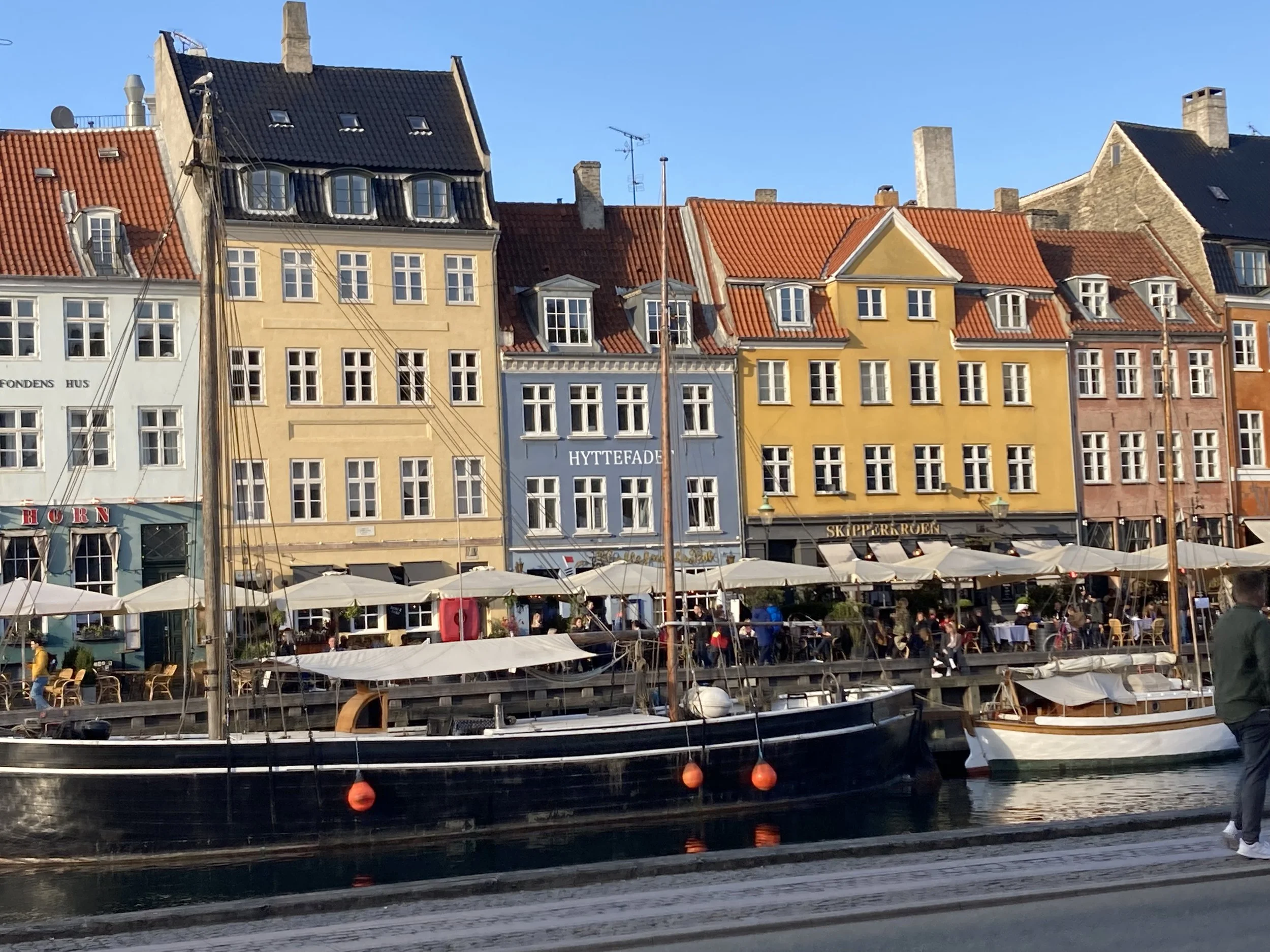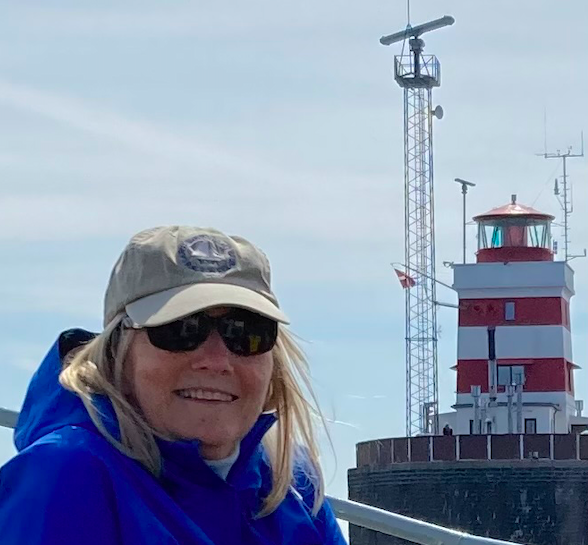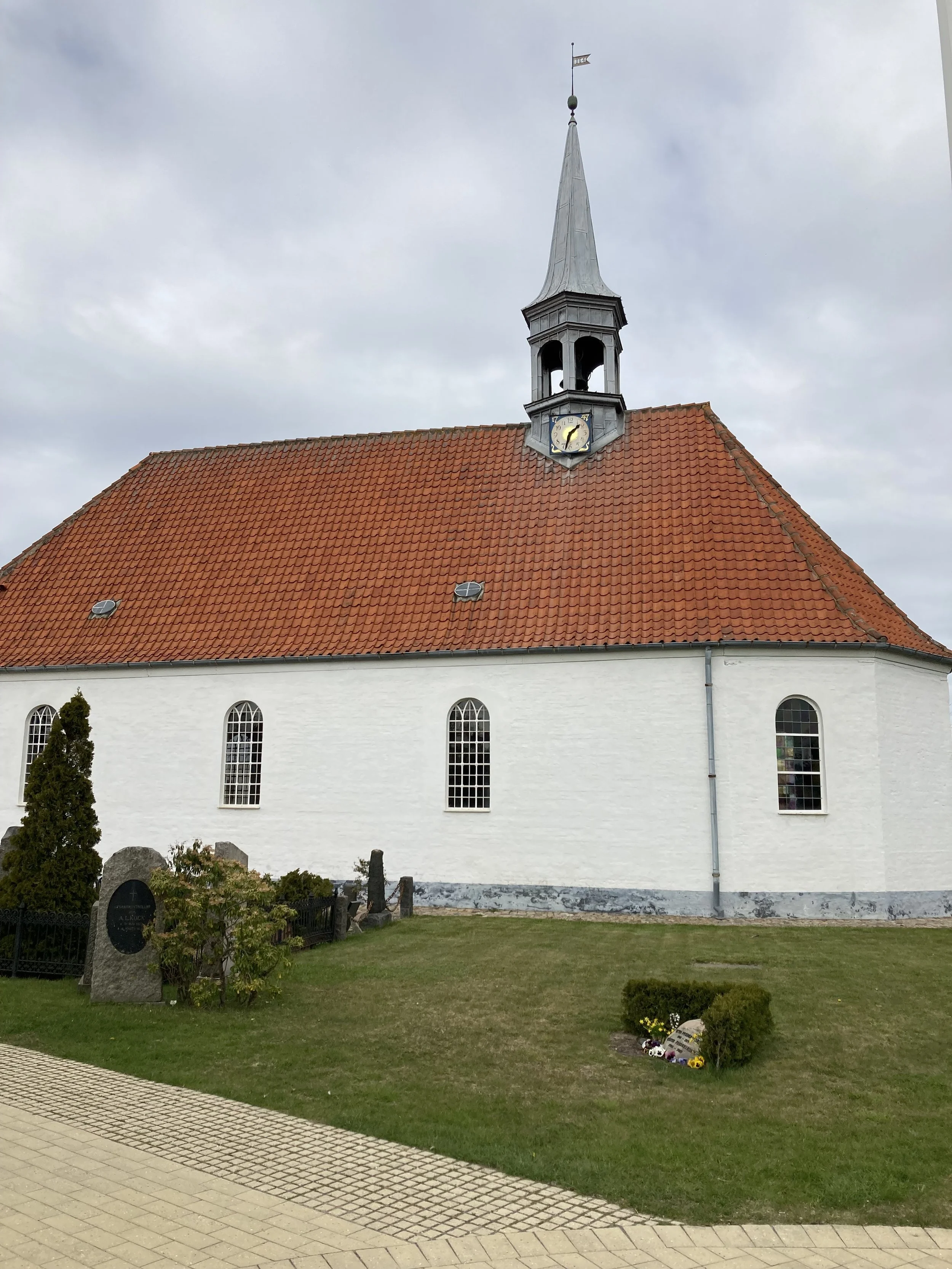A Closer Look
The Story Behind the Story
Check out Mr. Schu’s blog: Watch. Read. Connect.
This book started with a field trip to a favorite place—Mystic Seaport Museum in Connecticut. Strolling the docks with my husband, I came across this unassuming wooden workboat called Gerda III that was part of an exhibit called “Storyboats.” And what story!
Gerda III. Photo by Joe Michael, Mystic Seaport Museum.
In 1943, during the Nazi occupation of Denmark, this simple lighthouse workboat was a key player in the Danish Resistance. Thanks to a young woman named Henny Sinding and the Gerda III crew, this boat smuggled 300 Danish Jews to safety in Sweden, helping them escape a sudden Nazi roundup that would have sent Jewish families to German concentration camps. The boat was part of a jaw-dropping effort, a “small Dunkirk,” in which Danes helped persecuted families escape to Sweden aboard more than 600 small boats—sculls, kayaks, fishing boats, rowboats, and sailboats. No boat saved more than Gerda III.
Henny Sinding and a favorite pastime—sailing. Photo courtesy of the Sundø family.
When they heard rumors of a imminent Nazi roundup of Denmark’s Jews, Henny teamed up with the crew of Gerda III. They hid 10-15 men, women, and children in the fish hold below deck each day for the treacherous trip across the Øresund sea.
The fish hold on Gerda III. The interior is about 10’ x 12’ with a maximum headroom of 4’. Photo by Susan Hood.
The Danes’ heroic efforts paid off. By the end of October, more than ninety percent of the Danish Jews had escaped. Then Gerda III continued to aid the war effort by smuggling downed Allied airmen, compromised Resistance fighters, supplies, and intelligence across the sea.
One of my all-time favorite books for middle graders is Lois Lowry’s Number the Stars. This is the true Danish history behind that book.
Researching the Book
I traveled to Denmark and met with Henny’s daughter and nephew, who shepherded me all around Copenhagen and the coastline. It was the research trip of a lifetime!
Iconic Copenhagen. Photo by Susan Hood.
Henny’s daughter Lillan, nephew Flemming, and Flemming’s wife Marielle outside the Naval barracks where Henny was born. Photo by Susan Hood.
I saw where Henny grew up, where she learned to sail at Hellerup Havn, where she worked at the Lighthouse and Buoy Service, and where Gerda III was docked off an old warehouse. I visited the Naval Cadet School on Holmen, Nazi headquarters, Resistance fighters’ apartment buildings, and the Drogden Lighthouse.
Visiting Drogden Lighthouse in the middle of the Øresund Strait aboard Gerda IV. Photo by Paul Kueffner.
Next we traveled north to Gilleleje and visited the church where Gestapo Chief Hans Juhl captured about 80 Jews hidden in the church attic, including a boy named Gerd Lilienfeldt. Thankfully, Gerd ultimately escaped aboard Gerda III.
Gilleleje Church, north of Copenhagen, where more than 80 Jews hid in the attic awaiting transport. Photo by Susan Hood.
Gilleleje Church attic. Betrayed by an informant, most of the Jews hiding here were captured by the Nazis and sent to Theresienstadt concentration camp in what is now the Czech Republic.
A young Gerd Lilienfeldt with his family, just before he left Germany for Denmark. He was captured in Gilleleje, but ultimately escaped to Sweden thanks to Henny and Gerda III. Photo courtesy of Gerd’s son Sigurd Lilienfeldt.
Henny’s story is one my heart needed to hear and I can’t wait to share it with young readers. It’s a story of a young woman and her friends who saw injustice and did something about it. People who were upstanders, not bystanders. As Henny said,









